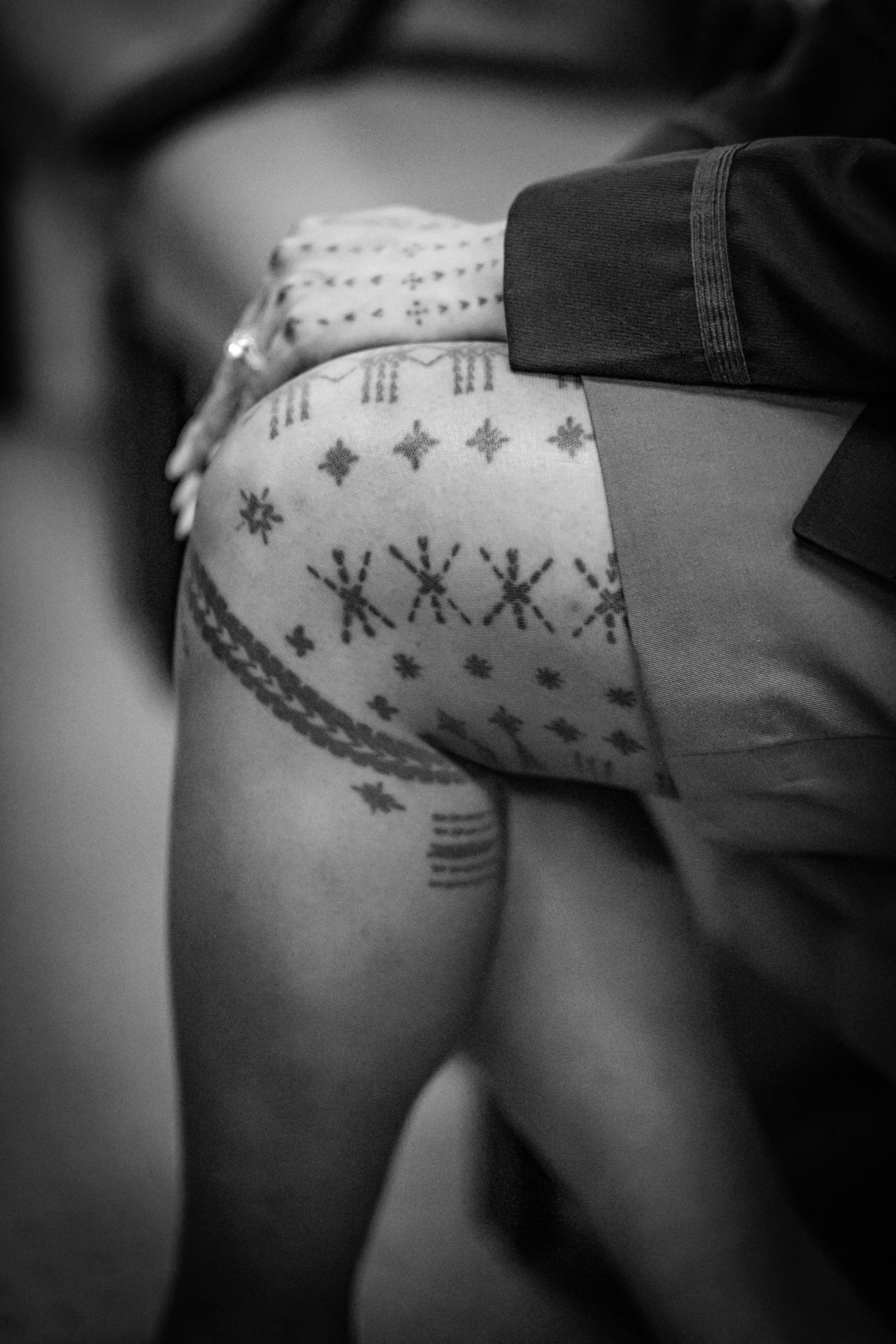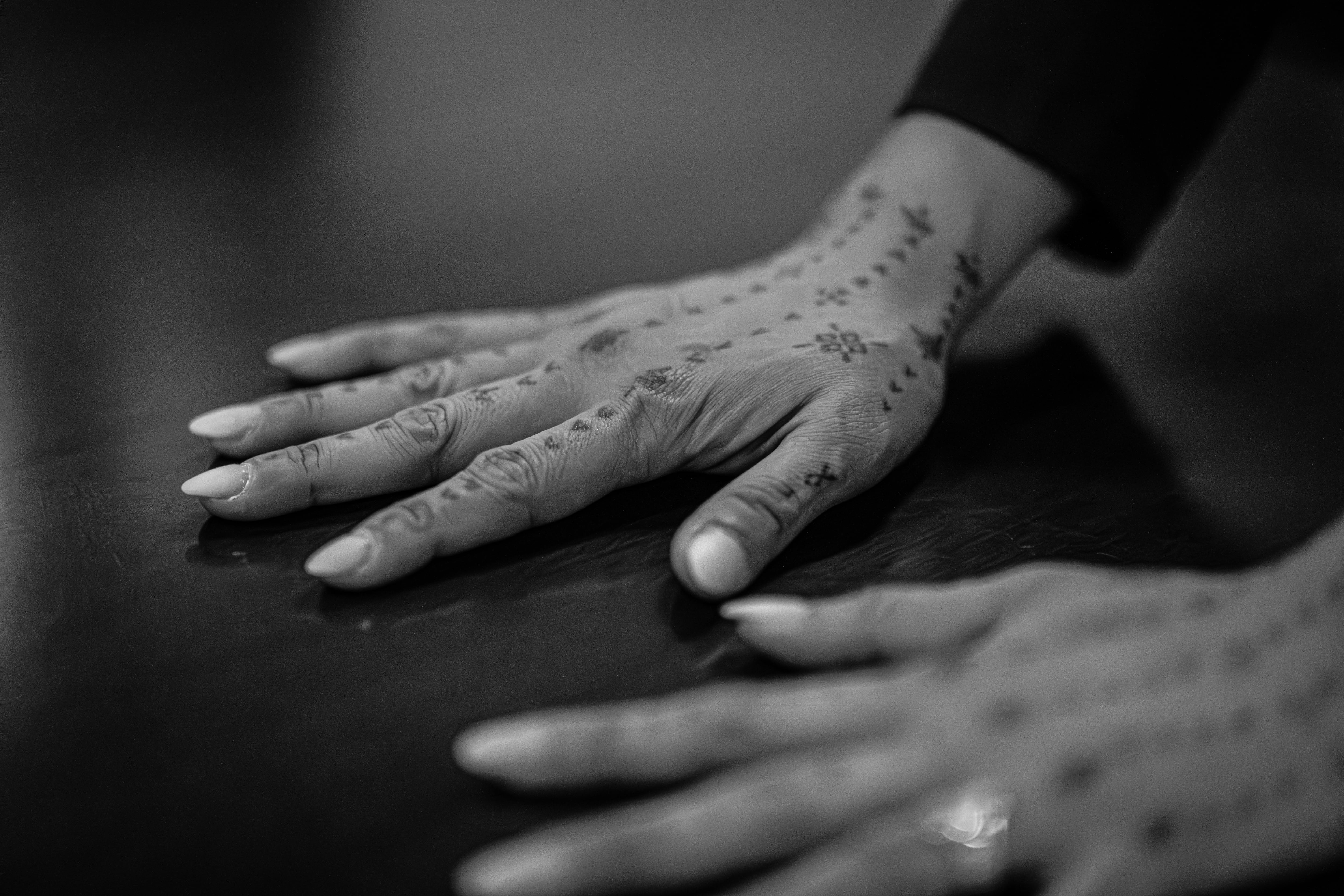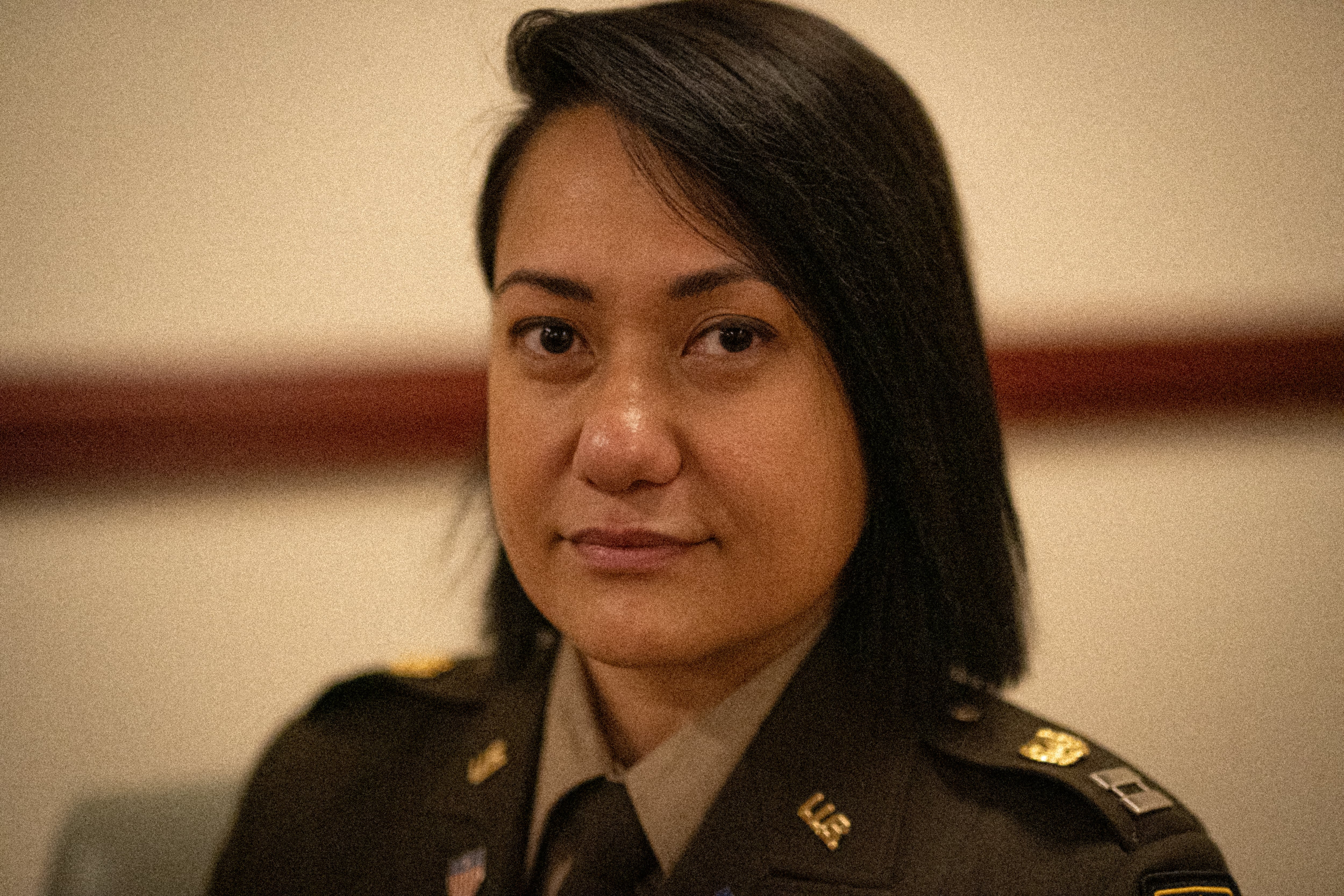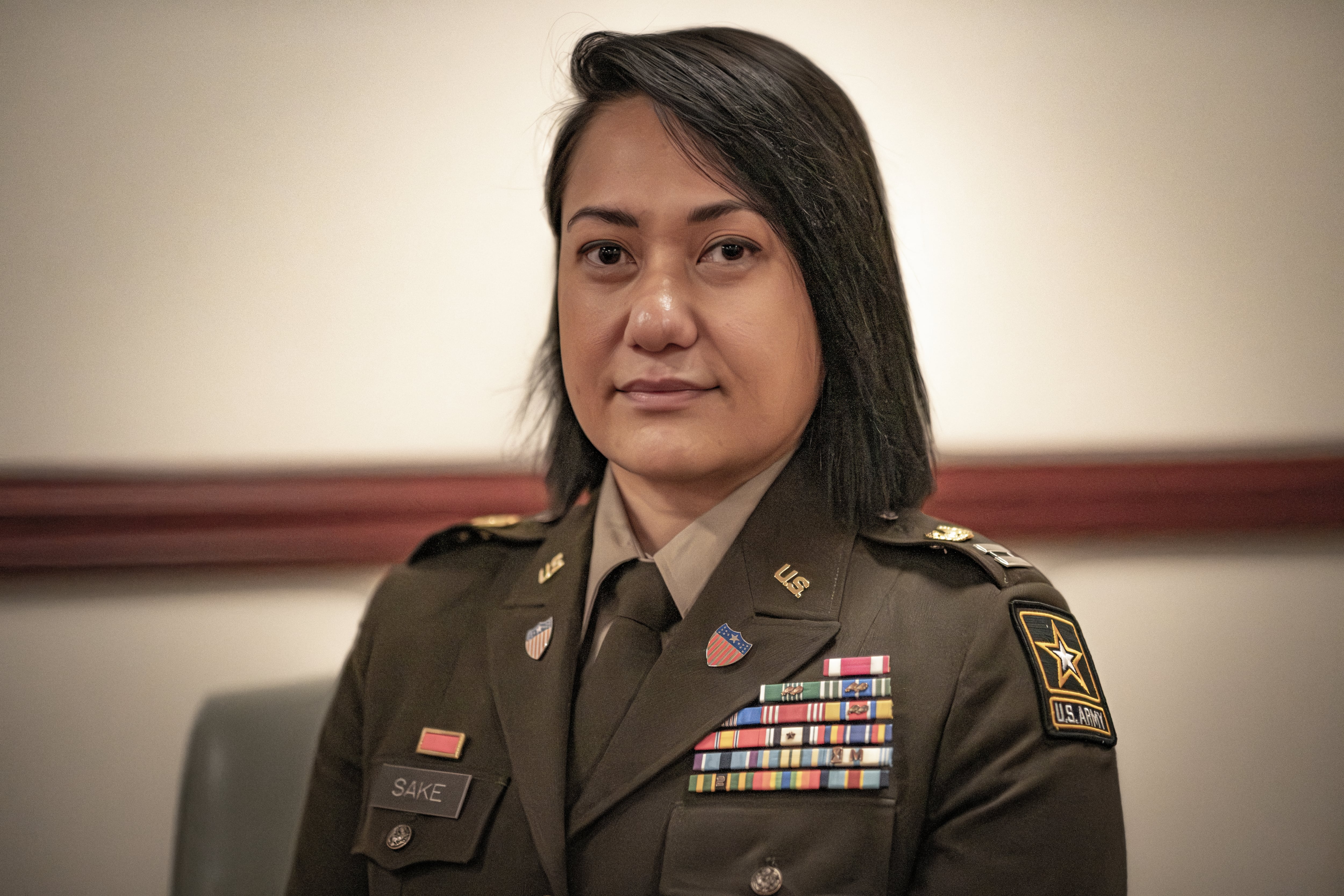Small arrows, birds and stars adorn the tops of the soldier’s hands and fingers.
Etched into her skin from the wrists up to her nail beds, the markings are no ordinary tattoos, but symbols of traditional “tatau” found among the people of the Polynesian island country Samoa.
Looking down at the body art, Army Capt. Isis Sake, 38, is reminded of the significance that each of the representations holds in her culture. After receiving approval, Sake’s tatau now also serve as a symbol of her service’s acceptance of her traditional heritage.
“One of the things that was a common question by other senior leaders was, ‘Wait, that’s not already approved?’” she said. “This is such a huge part of the Samoan culture. So, it’s just educating and then really sharing the symbolism behind it.”
In February, the Samoan officer became the first soldier to receive Army approval to possess such tattoos on her hands, a mark of recognition of the diverse communities that comprise the force and carry a calling for service.

Originally from Apia, Samoa — not to be confused with the nearby U.S. territory American Samoa — Sake moved to the United States with her family as a child. Following in the footsteps of her older sisters, she enlisted in the Army in 2008, quickly moving up the ranks before commissioning in June 2019.
Now an operations officer in support of the Army’s office of the deputy chief of staff for personnel, Sake emphasized the many similarities between Army service and Samoan culture: Loyalty, duty, respect and courage.
Seeking to visualize that commitment to selfless service, and inspired by a reverence for her culture, in 2017 Sake obtained the Samoan tatau for women — known as “malu” — on her legs before adding the traditional tattoos to her hands in 2022.

Tattoos have long served more than a skin-deep purpose for troops, with many opting to showcase pride for their service, unit or occupational specialty through the body art medium.
Each of the services, however, maintain strict rules on what tattoos are or are not within standards, allowing for individual expression while also aiming to ensure a professional, uniform appearance.
The tattoos on Sake’s legs were permitted, she said, but at the time of their fashioning those on her hands were not. But while some Army regulations continue to stick, others have been poked.
“I was counseled, because they’re not authorized,” Sake said of the hand tattoos, which triggered the process for her of asking for an exception to policy.

She noted that there are numerous others in the Army that have the tatau, just not on their hands, which she said typically only women get and which carries the added significance of being culturally identified as a “weaver.”
The first in her family to experience the sacred rite of passage, a birthright passed on by the chiefdom lines in Samoa, Sake received the needed blessing from her familial leaders to get her skin punctured with her initial tattoos in 2017. Those, as they do for other Samoan women, cover from the bottom of her knees to the top of her thighs.
“It symbolizes the deep trust and honor that a family places in one of their daughters,” she said, adding the tattoos also identify her as a leader in Samoan society. “It’s a commitment by the wearer to serve the family and to do their part to ensure that the Samoan way of life lives on.”
A skilled tattoo artist, who came from one of only two Samoan families who pass on the responsibility from one generation to the next, traveled to Virginia to perform the tapping of the ink, a time-honored ritual that can still be quite creative.
“The master tattooist — he goes off of energy,” Sake said. “So, you never know what you’re gonna get. You give your body to the master tattooist, [and] your body is now a canvas.”

The work can take hours. For Sake, it involved a painful, but rewarding day with a pair of five- to six-hour sessions.
The arduous process of receiving the tatau, meanwhile, is not traditionally a solitary venture, she emphasized. Sake’s husband joined her for the experience by also receiving the traditional tatau for men, known as “pe’a,” which covers from the bottom of the knees to the waist.
Without tattoo guns one would find at a modern shop, the piece for Sake’s husband took four days of 10- to 12-hour sessions to complete.
Others also attended the event, talking and listening to music as the designs were pierced into skin.
The healing process for Sake took around two to three weeks, she said, as well as a fair share of Aquaphor and anti-bacterial soap.
The same master tattooist returned to the U.S. to do her hands two years ago. The symbols themselves, added freeform without measurements, may look slightly different from person to person though each carries a distinctive meaning.
Arrows, known as “vae’ali” represent support, illustrating for Sake her role as a mother to her family and community.
Stars, known as “fetu,” express wisdom.
And birds, known as “fa’agogo,” embody navigation and guidance.
“They can go off, adventure, but they always find their way back home,” she said.
“And so, just like the Samoan culture, you can leave the island, but your culture is always going to be with you.”
Jonathan is a staff writer and editor of the Early Bird Brief newsletter for Military Times. Follow him on Twitter @lehrfeld_media
J.D. Simkins is the executive editor of Military Times and Defense News, and a Marine Corps veteran of the Iraq War.




